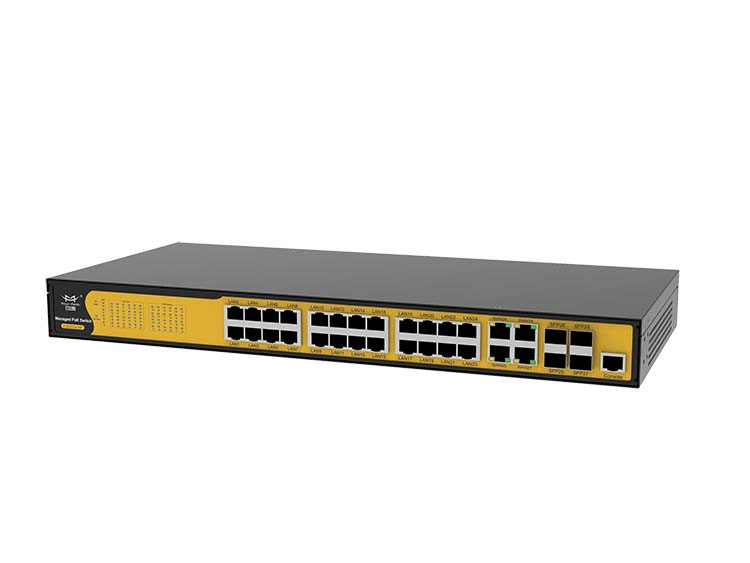Industrial switches are a relatively common switch product because of their relatively moderate number of ports and prices. Judging from the current market demand, the application of industrial switches is still very extensive. This article will introduce the performance of industrial switches and how to choose industrial switches.
Industrial switches support RJ45, SC/ST/FC and other interfaces, provide 6 10/100M Ethernet RJ45 electrical ports, 2 remote Ethernet optical ports that support SC/ST/FC interfaces, and support IEEE 802.1Q VLAN, Multiple protocols such as IEEE802.1p QOS realize effective planning and monitoring of business data. It also provides multiple methods such as port mirroring, link aggregation, MAC address filtering, and LLDP to effectively monitor and manage network data and network bandwidth.
Industrial switches are equipped with redundant dual power supply DC quota wide voltage range (10~55V) input function, which greatly improves the adaptability and reliability of power input, and protects the reliable transmission of network data of industrial automation systems.
Working environment considerations: including temperature range, EMC electromagnetic compatibility, installation method and power supply, etc. Industrial Ethernet switches are designed for environments that are not suitable for commercial switches.
Choose a managed or unmanaged switch: If the network is relatively simple, you can choose a plug-and-play unmanaged switch; if it is convenient for future maintenance, you may need to use a managed switch. Only a managed switch can achieve ring topology connections.
Relevant industrial standards must also be met: for example, industrial switches used in ships should meet the standards of ship structures; if it is an application in hazardous situations, it must meet the corresponding certification standards; transportation industries such as rail transit and highways also have their own standards.
Network management and non-network management. A key question when choosing an industrial Ethernet switch is whether to choose a managed switch or an unmanaged switch. Although managed switches are usually more expensive, they provide some additional powerful features. Managed switches include the characteristics of unmanaged switches.
Managed switches generally support Simple Network Management Protocol (SNMP). Of course, most managed switches do not only have this (SNMP) feature. Basically, managed switches allow you to control the network, while non-managed switches usually only allow Ethernet devices to communicate.
In short, industrial switches usually support the International Telecommunication Union (ITU) G.8032 standard ring network protection protocol, and support various ring network networking topologies. As for the selection, you can refer to the precautions mentioned above.




















